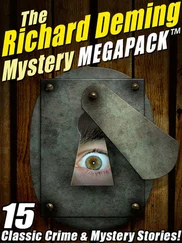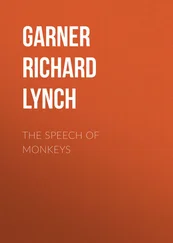Richard Greener - The Knowland Retribution
Здесь есть возможность читать онлайн «Richard Greener - The Knowland Retribution» весь текст электронной книги совершенно бесплатно (целиком полную версию без сокращений). В некоторых случаях можно слушать аудио, скачать через торрент в формате fb2 и присутствует краткое содержание. Жанр: Триллер, на английском языке. Описание произведения, (предисловие) а так же отзывы посетителей доступны на портале библиотеки ЛибКат.
- Название:The Knowland Retribution
- Автор:
- Жанр:
- Год:неизвестен
- ISBN:нет данных
- Рейтинг книги:5 / 5. Голосов: 1
-
Избранное:Добавить в избранное
- Отзывы:
-
Ваша оценка:
- 100
- 1
- 2
- 3
- 4
- 5
The Knowland Retribution: краткое содержание, описание и аннотация
Предлагаем к чтению аннотацию, описание, краткое содержание или предисловие (зависит от того, что написал сам автор книги «The Knowland Retribution»). Если вы не нашли необходимую информацию о книге — напишите в комментариях, мы постараемся отыскать её.
The Knowland Retribution — читать онлайн бесплатно полную книгу (весь текст) целиком
Ниже представлен текст книги, разбитый по страницам. Система сохранения места последней прочитанной страницы, позволяет с удобством читать онлайн бесплатно книгу «The Knowland Retribution», без необходимости каждый раз заново искать на чём Вы остановились. Поставьте закладку, и сможете в любой момент перейти на страницу, на которой закончили чтение.
Интервал:
Закладка:
That memory ran through Tom’s mind as he kneaded Nathan’s shoulder gently and looked at the lovely Indian woman. He said, “Dr. Roy, if you please, start from the beginning.”
“Yes, thank you Mr. Maloney. I shall.”
She’d stayed up all night fine-tuning her notes, preparing several dozen flip charts framing brightly printed words, illustrations, and simple diagrams. She referred to these as she went along.
“Bacteria,” she began, “is the dominant life form on earth. I’m sure you all know that cockroaches and sharks have remained essentially unchanged for hundreds of millions of years. They are newcomers, I assure you. Bacteria have been here for billions of years and will be here for billions more. Oh, yes! When our planet is only dead rock it will teem with bacteria. They will have evolved, mutated, no matter the conditions. Imagine a life form so quick to protect its own interest that when you kill it you instantly make its kind stronger, the more difficult to kill again. The more ways you find to kill it, the stronger you help it to be. Bacteria as a life form is impervious to destruction.”
She paused very briefly to gauge the room. They might be masters of money, but they were now her students. Even this disordered Stein could not resist the music in her voice, or the menace in her words.
“Did you know that NASA has tested the viability of bacteria during interplanetary travel? A species of bacteria called Bacillus subtilis withstood the rigors of space trapped in an absolute vacuum for more than six years. It emerged alive, and, as it were, ready for action.”
She flipped the NASA experiment chart over.
“And here on earth,” she continued, energized by the concentration flowing to her, “you know all about the Great Plague of the fourteenth century. Did you also know Napoleon lost an army of twenty thousand in Haiti without a single battle? Did you know twenty million died in the year 1918 from influenza? Imagine that. What we cannot imagine are all the plagues over millions of years, all the millions of humans, pre-humans, non-humans taken with none to remember and none to record.”
She took a slow, deep breath through her nose, exhaling from her mouth. It satisfied her like iced lemonade on a hot, dry day. But the ecstasy she felt was in the teaching.
“Now,” said Ganga Roy, “let us think about E. coli.”
She explained that as bacterial cells are everywhere, many will, in the normal course of their travels, acquire genetic information from various sources. The flip chart listed these sources: bacterial viruses, plasmids, slices or chunks of DNA floating around and about.
“By chance or purpose, bacteria have the knack of continuous self-improvement. They pick up information. This information may come in handy. It may help them survive, which is all that they really care about. The term ‘E. coli’ describes a group of bacteria. And that, I fear, brings us to the very unfortunate connection between E. coli and human beings.”
The next sheet contained a blue-bordered box, surrounded by an attractive swirl of multi-colored dots. Inside it she had artfully printed these bright red letters and numerals: O157: H7
“This,” said Dr. Roy, “is the primary cause of danger to humans emanating from the E. coli world. How has it become such a dangerous organism? Long ago a single cell acquired a bacterial virus, a virus adapted to life within bacterial organisms. This particular virus had the ability to insert its own DNA into the bacteria’s chromosome without harming the bacterium, and it did, remaining there over the countless generations ever since. Each time this bacterial cell divides, the virus DNA, which is now part of the bacterial DNA, is part of every succeeding cell. These daughter cells of the originally infected bacterium constitute the E. coli strain of which we speak: O157: H7.” She decided to skip the E. coli testing process-the agar and sorbitol and smack-leave it for later, avoid another outburst. At this point she could not imagine it helping the flow. Briefly, she checked the group. She wanted no loose ends distracting them now. Nathan Stein obliged her with a swagger. “So all of these E. coli come from the first one.”
“Precisely,” she said, rewarding him with her first unguarded smile. “Much to our distress as human beings, this virus’s genetic information-the virus that is now inseparable from the bacteria-contains instructions for the production of a toxin, or poison, which is called ‘Shiga-like toxin’ or ‘SLT,’ also called ‘Vero toxin.’” By now they were all taking notes, except Tom Maloney.
As her next flip chart illustrated, “Our friend the E. coli O157: H7 has no choice at all but to produce this toxin. Why is that bad for us?” she asked Nathan Stein, paying him the improbable courtesy of suggesting that he might know. “The toxin is a protein,” she said. “That protein can cause severe damage to intestinal epithelial cells-cells that line the wall of the gut.”
“What kind of damage?” again she pretended to ask Nathan Stein, presenting her next sheet, simple but disturbing. “The protein degrades the epithelial cells, causing us to lose water and salts. But does it stop there? I am afraid not. It damages our blood vessels as well. The result? Bleeding. A very great deal of bleeding.”
She cast her glance around the room, grappling every eye to her own, preparing them for the capper:
“Hemorrhaging!” she declared, showing the sheet with the terrible word leaping off the page.
The next sheet depicted children at play-elegant, inventive, stick-figures of children.
“Those in the most danger are children. Why? They are often too small to fight the effects of blood loss and loss of bodily fluids. And what else may happen to them?”
Dr. Roy knew they were now on terrain where Nathan Stein was likeliest to rebel. They’d arrived at the section of her report entitled “Consequential Developments.” She introduced a more somber note to her voice.
“In some cases another syndrome may also be involved. It’s called hemolytic uremic syndrome, or HUS.” And there they were, all three letters: large, red, ornately inscribed. HUS
“HUS is characterized by kidney failure and loss of red blood cells, and is most dangerous to children. Perhaps 5 to 10 percent of the littlest ones will progress to this stage of disease. In the most severe of these cases, they will suffer permanent kidney damage.”
Now came two more stick figures, one in a bed, one stooping over a walking cane.
“The presence of the E. coli we are concerned with also presents potential for traumatic events among the elderly and people with chronic debilitating disease. For older people who suffer with respiratory or heart disease, or one of many conditions weakening their immune systems, to become infected with E. coli 0157: H7 is often deadly.”
She paused. The sudden unease in the room was positively physical.
“Deadly?” asked Louise Hollingsworth in a hushed, and surprisingly but distinctly disgusted, voice. “ How deadly? I don’t mean how do they die; I mean how many of them die.”
The next few flip charts presented the numbers.
“The latest available data from the Centers for Disease Control show seventy-three thousand cases of this kind of E. coli contamination for the latest year studied.”
Dr. Roy became brisk, even cheerful again, referring her group to the flip chart pages, and to the tables at the end of her report.
“The hospitalization rate for cases with extreme complications, meaning a progression to HUS, is a jot less than three tenths of one percent. Very few developed HUS. Among those who did, however, 28 percent died. That means the annual total of deaths attributed to O157: H7 was sixty-one. For all patients progressing to HUS, considering all causes, the death rate is between 3 and 5 percent. Among the elderly,” Dr. Roy said, “it will kill about half.”
Читать дальшеИнтервал:
Закладка:
Похожие книги на «The Knowland Retribution»
Представляем Вашему вниманию похожие книги на «The Knowland Retribution» списком для выбора. Мы отобрали схожую по названию и смыслу литературу в надежде предоставить читателям больше вариантов отыскать новые, интересные, ещё непрочитанные произведения.
Обсуждение, отзывы о книге «The Knowland Retribution» и просто собственные мнения читателей. Оставьте ваши комментарии, напишите, что Вы думаете о произведении, его смысле или главных героях. Укажите что конкретно понравилось, а что нет, и почему Вы так считаете.











